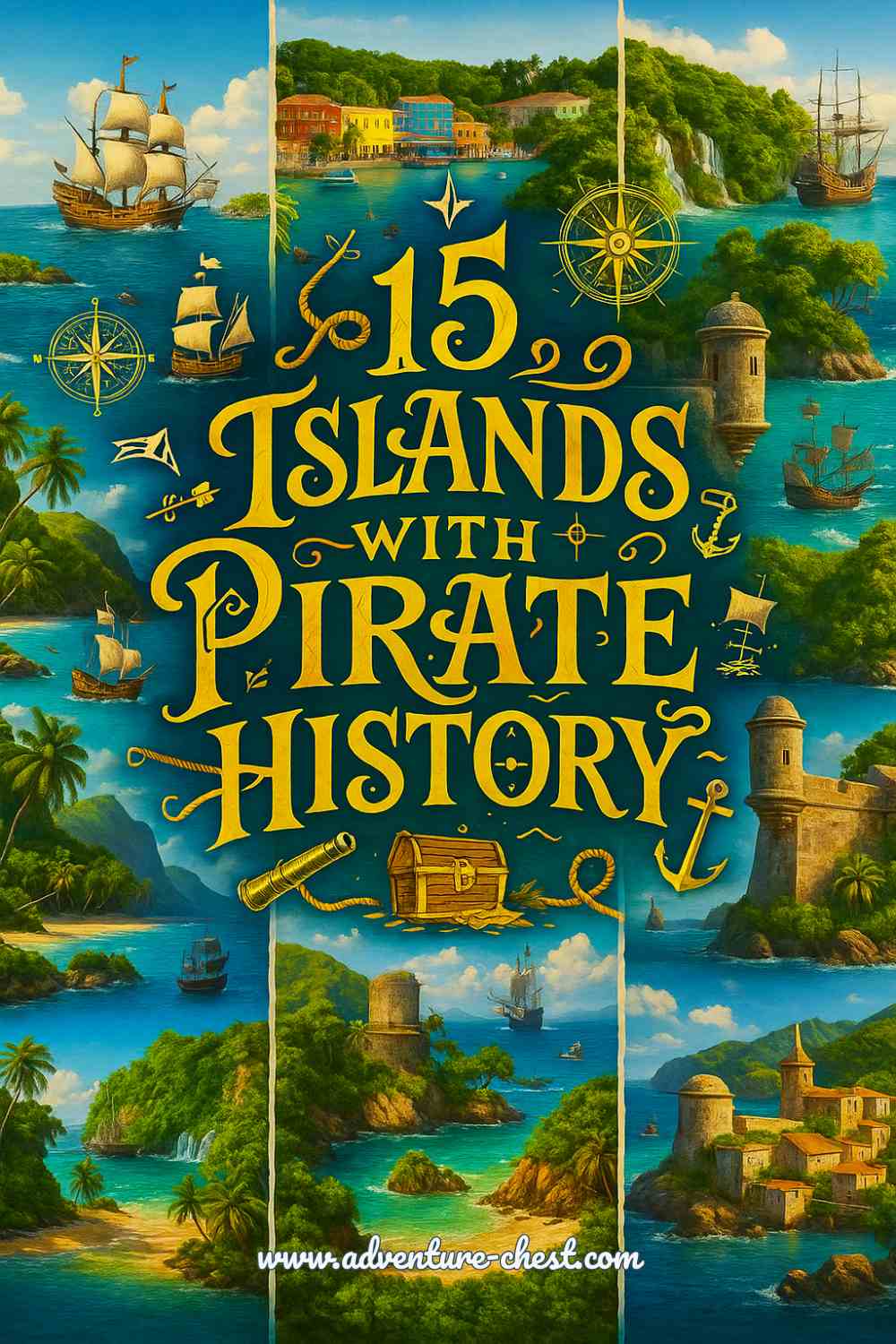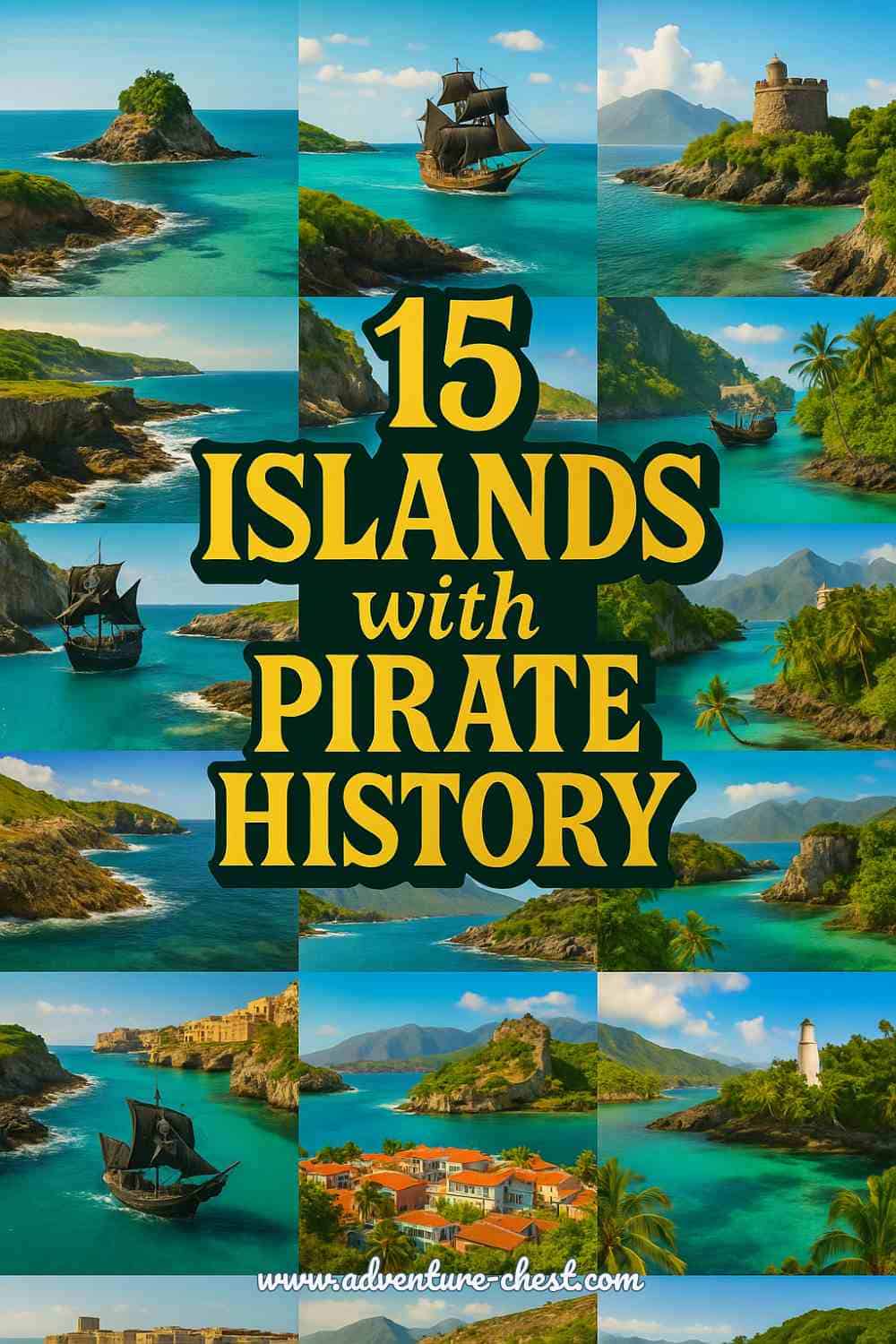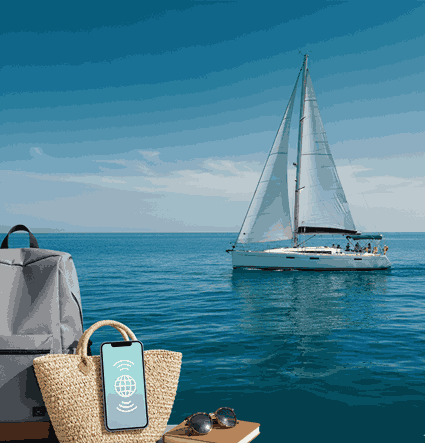Ready to set sail on an adventure through some of the most notorious pirate havens in history? These tropical paradise islands with pirate history, white sandy beaches, are steeped in tales of swashbuckling adventures, buried treasure, and legendary outlaws who ruled the seas.
Did you know that during the Golden Age of Piracy (1690s-1730s), over 5,000 pirates terrorized merchant ships across the world’s oceans? Many of these sea rogues called remote islands home, using them as secret bases, supply stations, and safe harbors.
Tortuga, Haiti: The Original Pirate Republic
In the 1600s, Tortuga became the first true pirate republic, where French buccaneers established a lawless society free from European control. This small island off Haiti’s northwest coast served as the headquarters for the legendary Brethren of the Coast, with pirates like François l’Olonnais using it as their base for raids against Spanish treasure fleets.
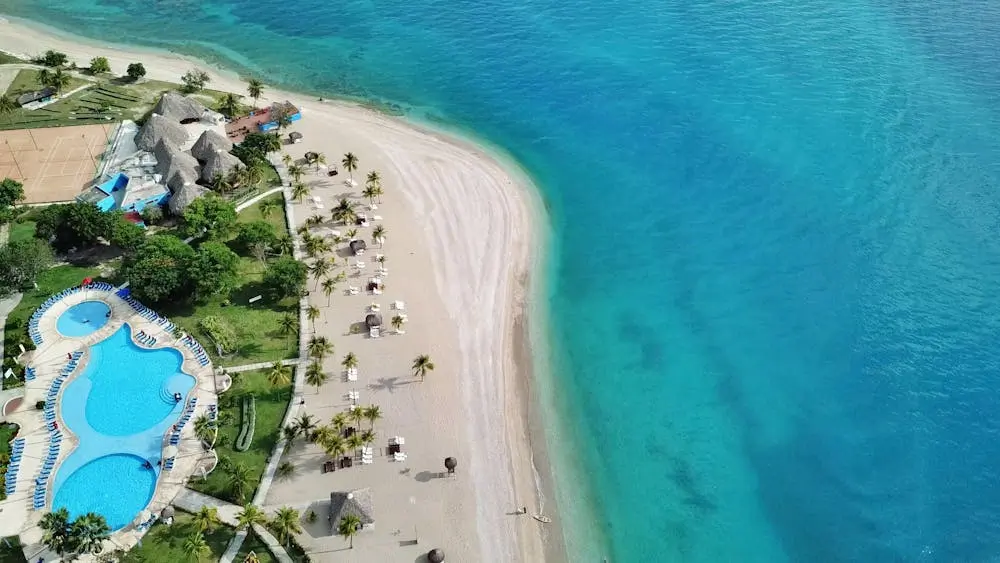
Tortuga quick facts:
- Access: Daily ferry service from Port-de-Paix, La Pointe, Saint-Louis du Nord, Berger, and Anse-à-Foleur on the Haitian mainland
- Population: 25,936 residents as of the 2003 census, largely governed by a Catholic church mission since 1977
- Language: English-speaking people are readily available, making communication much easier than in mainland Haiti
What to See in Tortuga
| Fort de Rocher Ruins | The fortress foundations remain visible today, located on the rocky coastline where buccaneers once defended their republic |
| Archaeological Sites | Recent Franco-Haitian archaeological teams have uncovered both Le Vasseur’s and Blondel’s fort remains |
| Historical Villages | Main villages preserve colonial architecture and pirate-era buildings |
| Natural Caves | Cave systems that served as storage for pirate treasure and supplies |
Daily ferryboats transport tourists to the main villages, caves, ruins, and beaches. The island offers an authentic experience with minimal commercial tourism, making it ideal for history enthusiasts seeking to walk in the footsteps of the Caribbean’s most notorious pirates.
Nassau, Bahamas: Blackbeard’s Caribbean Capital
From 1706-1718, Nassau transformed into the ultimate pirate haven under the “Pirate Republic.” Edward Teach (Blackbeard), Charles Vane, and over 1,000 pirates made this their capital. The natural harbor provided perfect protection, while the shallow waters kept pursuing naval vessels at bay. Fort Nassau (now Fort Fincastle) was built in 1793 to prevent future pirate occupation.
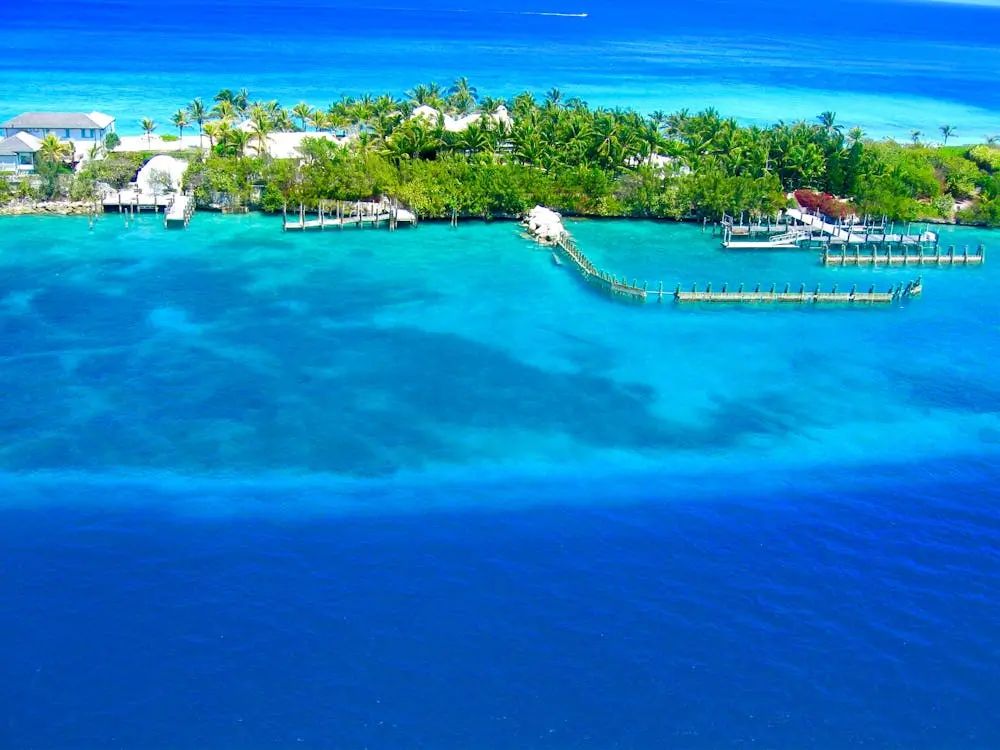
Pirates of Nassau Museum
Set inside a replica pirate ship and waterfront shantytown, the museum blends historical artifacts with interactive exhibits, chronicling the exploits of infamous figures like Blackbeard and Anne Bonny. Visitors can explore recreated scenes from Nassau’s pirate republic era, including life aboard a pirate vessel and the city’s once lawless harbor.
Location Details
Fort Fincastle
Fort Fincastle was built in 1793 by Lord Dunmore to defend the island and its harbor from potential invaders. Shaped like a paddle steamer’s bow, the limestone fort provided strategic views of Nassau and the surrounding seas, making it a key lookout point during the post-pirate era. While it was constructed after the Golden Age of Piracy, its location underscores Nassau’s historical importance in maritime defense. Today, visitors can explore its cannons, stone corridors, and panoramic views, gaining insight into how the island evolved from a pirate haven to a fortified colonial outpost.
- Location: Bennet’s Hill, accessible via Queen’s Staircase
- Admission: $1 for adults (includes Queen’s Staircase), children under 12 free
- What to see: Panoramic views of Nassau harbor, original fort structure, escape tunnels (fenced off but visible)
- Pro tip: Local guides at the entrance offer tours for $10 with stories not in guidebooks
The Bahamas is heaven for wreck-diving with 176 mapped shipwrecks in the region, with shallow wrecks up to 50 feet, moderate 50-90 feet, and deep over 90 feet. Though not exactly underwater, the Bahamas Maritime Museum, located in Freeport, houses priceless treasures from 350-year-old Spanish shipwrecks.
- Best time: Year-round, but avoid hurricane season (June-November)
- Walking distance: All main pirate sites within a 15-minute walk of the cruise port
- Cultural events: Junkanoo parades during Christmas and New Year celebrations
Port Royal, Jamaica: The Wickedest City on Earth
Once called “the wickedest city on Earth,” Port Royal was the Caribbean’s richest and most notorious port in the late 1600s. Henry Morgan and his privateers brought Spanish treasure here, creating a city comparable in size to Boston that flourished with wealth until the devastating June 7, 1692, earthquake swept two-thirds of the city under the ocean.
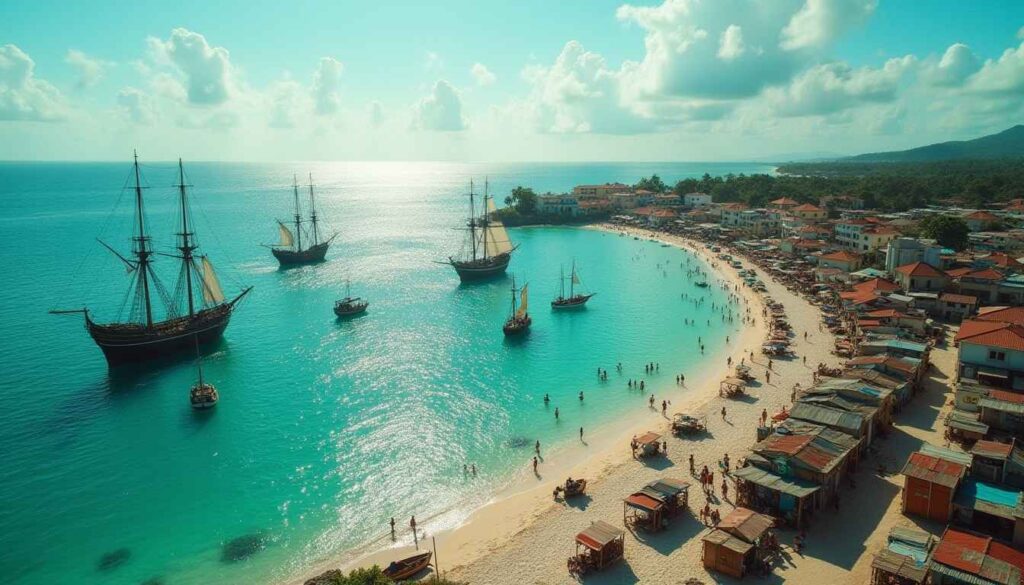
What to see in Port Royal
Not being the most popular tourist destination today, Port Royal has a lot to offer modern pirate treasure seekers.
Fort Charles
Fort Charles, built in 1655 by the British after capturing Jamaica from the Spanish, is the oldest of Port Royal’s fortifications. Strategically located at the tip of the Palisadoes peninsula, it was crucial in defending the city, then a notorious pirate haven and base for figures like Henry Morgan.
Location Details
Morgan’s Harbour
A modern marina was built near Henry Morgan’s original operations. Today, there’s a bar and restaurant with harbor views.
Île Sainte-Marie, Madagascar: Indian Ocean Pirate Base
Île Sainte-Marie (Nosy Boraha), a narrow island off Madagascar’s northeast coast, was a major base for Indian Ocean piracy in the late 1600s and early 1700s. Today, it remains relatively undeveloped, with limited infrastructure and low tourist density. For travelers interested in early maritime history, this is one of the few places where pirate activity left visible, documented traces.
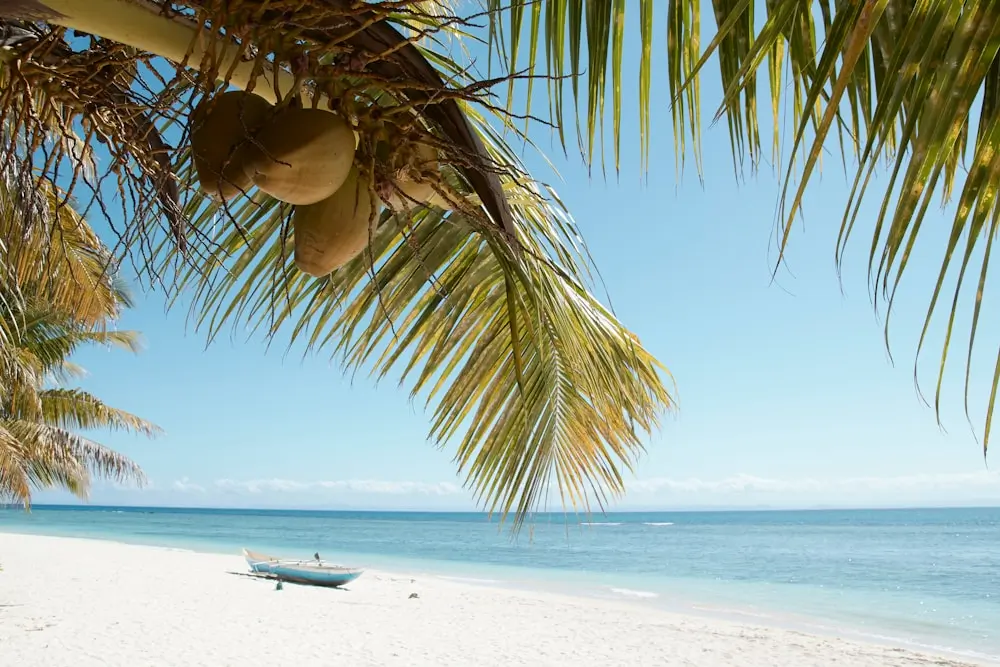
Situated just off Madagascar’s east coast, Île Sainte‑Marie was ideally located along the lucrative maritime routes between the East Indies and Europe. Better still, its calm bays offered safe havens to careen, resupply, and conceal pirate ships, tasks pirates couldn’t perform in the storm-prone open ocean.
The pirate cemetery
The island’s pirate cemetery, accessible by a short boat ride from Ambodifotatra, contains weathered tombstones believed to belong to figures such as William Kidd and Olivier Levasseur. The surrounding waters, once used to hide and repair pirate ships, are now dive sites and whale migration corridors.
Whale watching
Île Sainte-Marie is the destination for whale watching from July to September. Humpback whales migrate from Antarctica to breed in the island’s sheltered channel. Calm waters and shallow depths allow close sightings of breaching whales, tail slaps, and mothers swimming with calves. No special equipment is required (whales are often visible from shore), but boat excursions offer better vantage points and photographic angles.
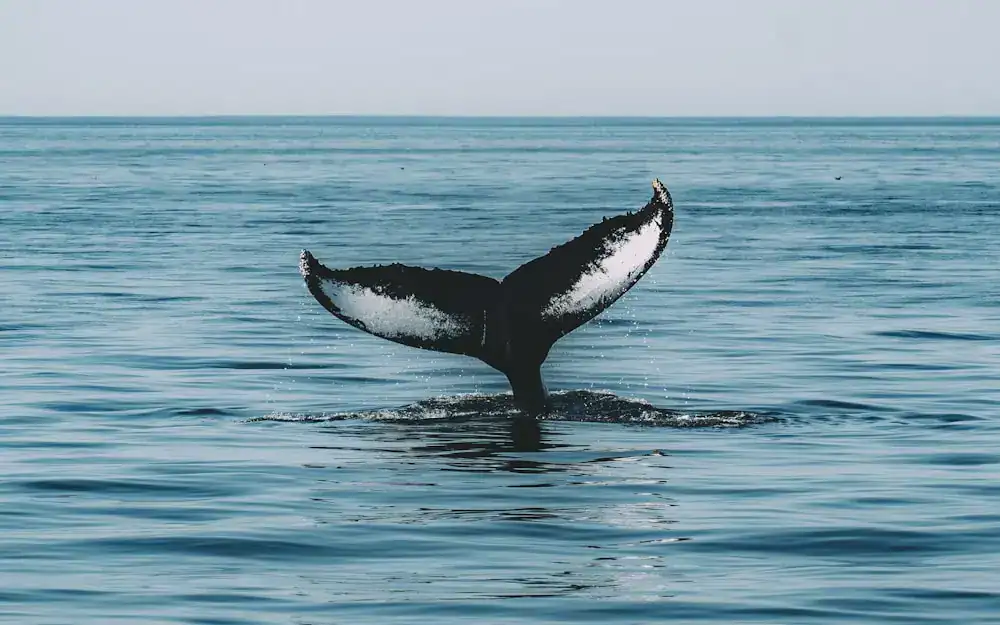
Ocracoke Island, North Carolina: Blackbeard’s Final Stand
This remote Outer Banks island served as Blackbeard’s final refuge. On November 22, 1718, Royal Navy Lieutenant Robert Maynard approached Blackbeard in the waters off Ocracoke, and in the ensuing battle, Blackbeard suffered 25 stab wounds and five bullets before being beheaded. His head was hung on the bow of Maynard’s ship, while local legend claims his headless body swam around the vessel multiple times.
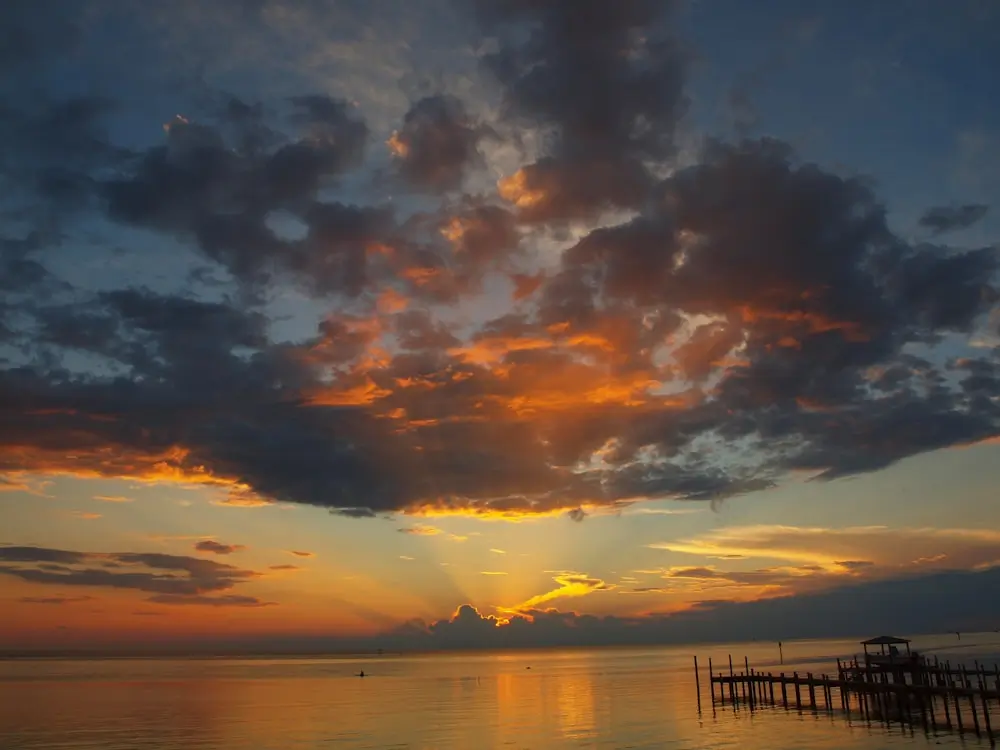
The Blackbeard sites on Ocracoke Island
| Teach’s Hole | deep water channel off Springer’s Point, where Blackbeard met his end, named in Blackbeard’s honor |
| Teach’s Hole Blackbeard Exhibit | collection of pirate paraphernalia on the Outer Banks: Authentic pirate artifacts, weapons, and detailed account of Blackbeard’s final battle |
| Springer’s Point | nature preserve with walking trails, near where the final battle took place; undeveloped shoreline offering views of the waters where Blackbeard was killed |
| Ocracoke Village Cemetery | British sailors from WWII and historical maritime figures |
Ocracoke Island Quick Facts:
- Size: 16 miles long, half-mile wide
- Vehicle restrictions: Separated by a 20+ mile wide Pamlico Sound, accessible only by ferry or private vessel
- Ocracoke Ghost Walk: Starts at Village Craftsmen on Howard Street, 1.5 miles, 90 minutes, includes pirate legends and supernatural tales
Ferry Routes to Ocracoke island:
- From Hatteras: Free ferry, 60-minute crossing
- Ocracoke Express Passenger Ferry: $5 per person one-way, 70-minute crossing, children 3 and under free
- From Cedar Island: 2 hours 15 minutes, 22-mile crossing
- From Swan Quarter: Similar mainland connection requiring reservations
Roatán, Honduras: Henry Morgan’s Strategic Base
Welsh pirate Henry Morgan used Roatán as a strategic base for his raids against Spanish settlements in the 1600s. The island’s position near the Mesoamerican Reef made it an ideal location for intercepting Spanish treasure ships, while also providing numerous hidden coves for shelter.
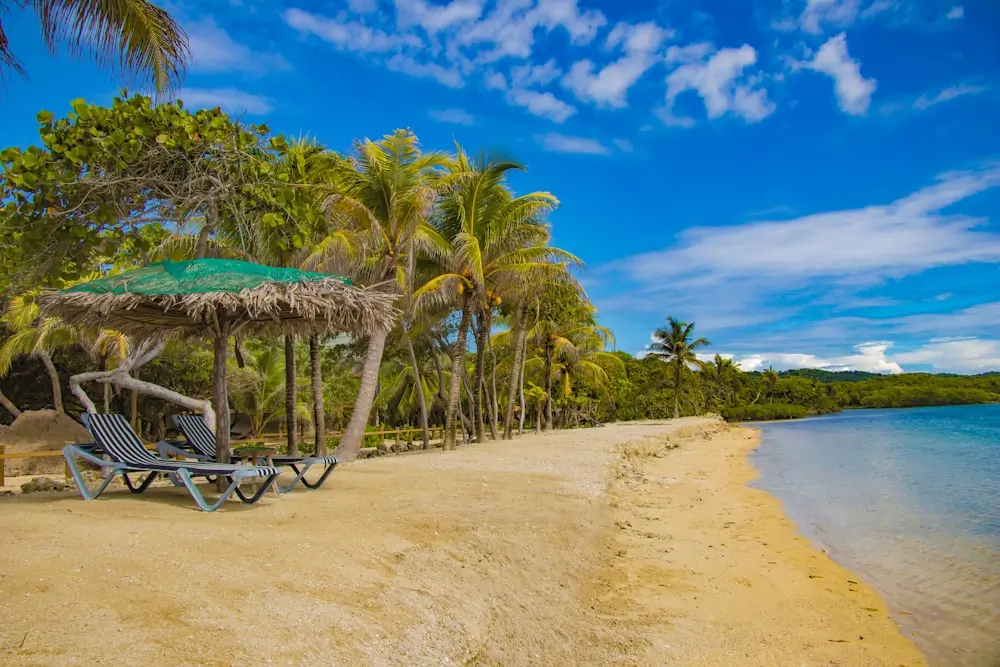
Roatan Pirate Sites
Roatán’s pirate past is no mere legend, a lot of sites you can still see today:
| Coxen Hole | Coxen Hole, Roatán’s main town and airport gateway, bears the name of 17th-century pirate John Coxen, who commanded a pirate crew around 1687–1690 |
| Port Royal Peninsula | In the early 1740s, British forces fortified the Port Royal peninsula, building at least two forts—Fort Frederick and Fort George, plus cannon placements across strategically vulnerable sites |
| Roatán Museum (Anthony’s Key) | maps, period artifacts, and firsthand accounts such as Philip Ashton’s 16-month castaway experience on Roatán |
Diving on Roatán
Roatán is recognized as one of the Caribbean’s top diving destinations, with conditions ideal for both beginner and advanced divers. The island is surrounded by the Mesoamerican Barrier Reef, the second-largest coral reef system in the world, offering consistent visibility, warm water year-round, and a diverse range of dive environments.
| Site Name | Type | Location/Depth | Notable Features |
|---|---|---|---|
| El Aguila | Wreck Dive | 110 ft depth | Large intact wreck, ideal for experienced divers |
| The Odyssey | Wreck Dive | 80–110 ft depth range | Massive freighter, complex interior swim-throughs |
| Mr Bud | Wreck Dive | 45 ft depth | Small wreck, accessible for beginners |
| Prince Albert | Wreck Dive | 65 ft depth | Mid-size wreck with good visibility and sponge growth |
| Pablo’s Place | Reef Wall | Near Flowers Bay, starts at 50 ft | Steep vertical drop, rich coral life |
| West End Wall | Reef Wall | Western Roatán | Frequent eagle ray sightings, vibrant fish schools |
| Various Sites | Reef Features | Throughout island | Overhangs, canyons, caverns, and swim-through formations |
Wreck diving is a major attraction. Sites like El Aguila and The Odyssey are deliberately sunk vessels, now colonized by corals and inhabited by grouper, barracuda, and moray eels. These deeper dives require advanced certification but reward divers with large-scale structures and penetrating swim-throughs. Shallow wrecks, such as those of Mr. Bud and Prince Albert, are accessible to less experienced divers and offer excellent photo opportunities.
Saint Thomas, US Virgin Islands: Danish West Indies Pirate Haven
Under Danish rule, Saint Thomas became a neutral port where pirates could trade stolen goods freely. The island’s Charlotte Amalie harbor welcomed notorious pirates like Blackbeard and Captain Kidd, who found safe haven among the Danish colonists who profited from their trade.

Danish colonial ambitions established Saint Thomas as a strategic trade hub after 1671, but its role as a pirate haven flourished under Governor Adolph Esmit in the early 1680s. Esmit famously offered refuge and resupply to pirates in exchange for goods, even defending Jean Hamlin’s ship La Trompeuse when the British attacked in 1683.
Historic Sites and Pirate-Era Structures on Saint Thomas
| Site | Description | Tourist Experience |
|---|---|---|
| Blackbeard’s Castle (Skytsborg Tower) | Houses St. Thomas Museum, which displays artifacts and documentation from the pirate and Danish colonial periods | Houses St. Thomas Museum, which displays artifacts and documentation from pirate and Danish colonial periods |
| Bluebeard’s Castle | A 1689 Danish watchtower mythologized as pirate Bonnie Bluebeard’s residence | Hotel and event site with interpretive plaques and impressive architecture |
| Fort Christian | Danish-built watchtower c.1679, later associated with pirate legend | Careening and repair station on a piracy-influenced harbor |
| Creque Marine Railway, Hassel Island | Colonial fort from 1672–1680 that overshadowed the pirate-dominated trade era | Accessible via ferry and hiking trail; ruins of colonial marine infrastructure |
Though no historical evidence ties Edward Teach (Blackbeard) to Saint Thomas specifically, the tower was used for pirate-related activity and remains one of the most intact colonial-era fortifications on the island.
It offers views over the entire bay, emphasizing why it was chosen as a surveillance point. Around the tower, modern reconstructions of pirate figures and interpretive plaques provide context without relying on myth alone.
Saint Thomas Quick Facts:
- No passport required: US citizens can travel freely, other countries will require a US visa
- Currency: US Dollar
- Language: English
- Transportation: Safari taxis (open-air buses) connect major attractions
Grand Bahama Island: Calico Jack’s Territory
“Calico Jack” Rackham operated from Grand Bahama’s secluded coves, joined by the famous female pirates Anne Bonny and Mary Read. The island’s numerous shallow bays provided perfect hiding spots for their sloop, while the nearby shipping lanes offered rich pickings.
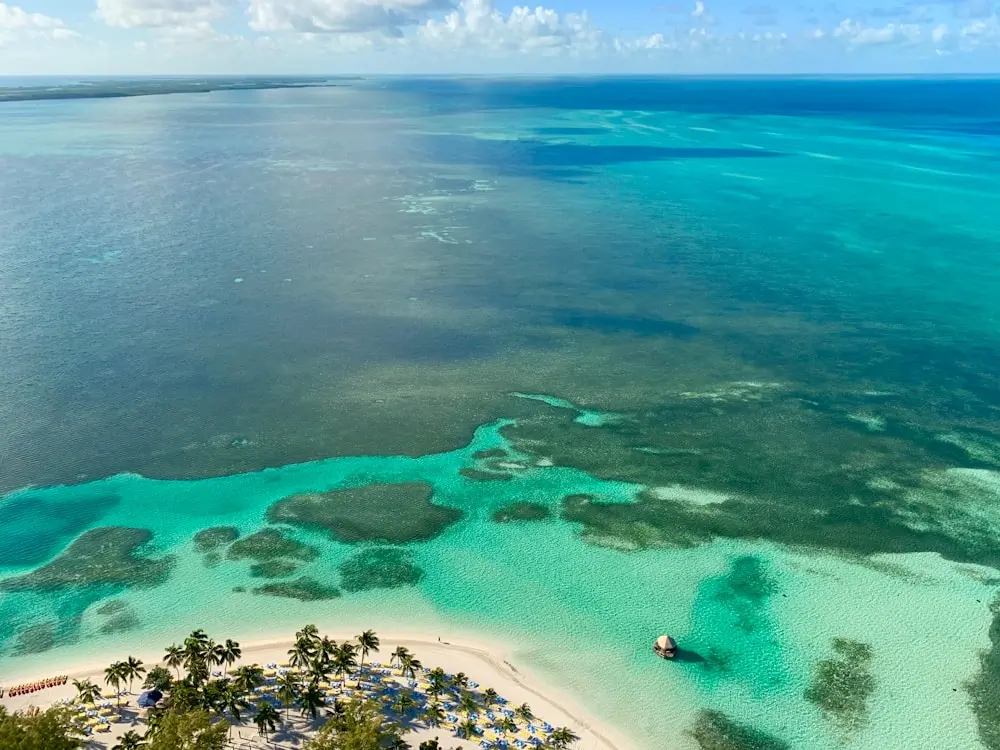
On top of the above, Grand Bahama Island occupies a strategic position along the “Golden Road” — the main shipping lane back to Europe. Its proximity to Florida (just 55 miles from West Palm Beach) makes it one of the most frequently visited of the Bahamian islands, and a regular stop for cruise ships from major lines like Carnival and Royal Caribbean.
Pirate Experiences on Grand Bahama Island
- Grand Bahama Museum (Freeport): Interprets local pirate activity and shipping lanes
- Old Bahama Bay: Anchorages used for quick strikes and vessel careening
- Lucayan National Park: hikes into caves and blue holes, once used to stash goods. Ben’s Cave and Burial Mound Cave are accessible to certified cave divers
Barbados: Sam Bellamy’s Caribbean Connection
“Black Sam” Bellamy, known as the “Prince of Pirates,” used Barbados as a recruitment ground and supply base. The island’s position at the edge of the Caribbean made it a perfect launching point for raids into the Atlantic shipping lanes.
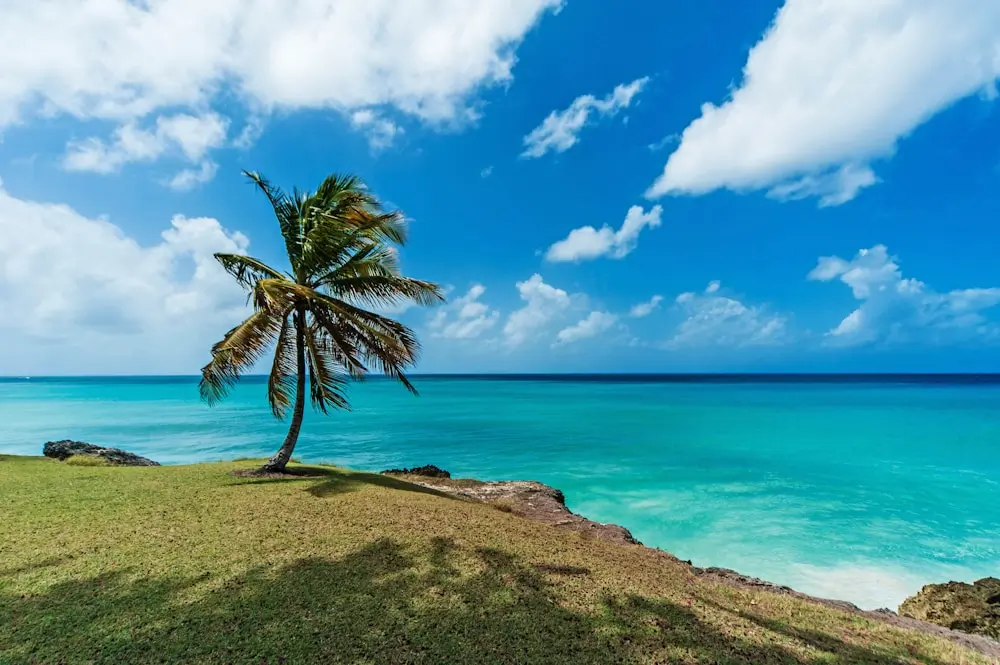
Barbados today is a well-developed Caribbean destination known for its British colonial heritage, white-sand beaches, and vibrant cultural scene centered in the capital, Bridgetown. It has one of the region’s highest standards of living and a tourism economy supported by direct air links, cruise traffic, and a thriving hospitality sector. Visitors are drawn not only to its coastline and nightlife but also to its preserved plantation houses and UNESCO-listed historic district.
Historic Sites of Barbados
| Location | Higlights | |
|---|---|---|
| Barbados Museum | St. Ann’s Garrison, Bridgetown | Housed in former British military prison (1853); Maritime history section with pirate artifacts and ship models |
| Garrison Savannah | Bridgetown | Former British military base where pirates were imprisoned and executed |
| Mount Gay Rum Distillery | Mount Gay | World’s oldest rum brand (1703) |
Key West, Florida: Wreckers and Pirates Paradise
Key West’s treacherous reefs created perfect opportunities for both accidental shipwrecks and intentional piracy. “Wreckers” operated in a gray area between legal salvage and outright piracy, while the island served as a base for Caribbean pirates raiding shipping lanes.
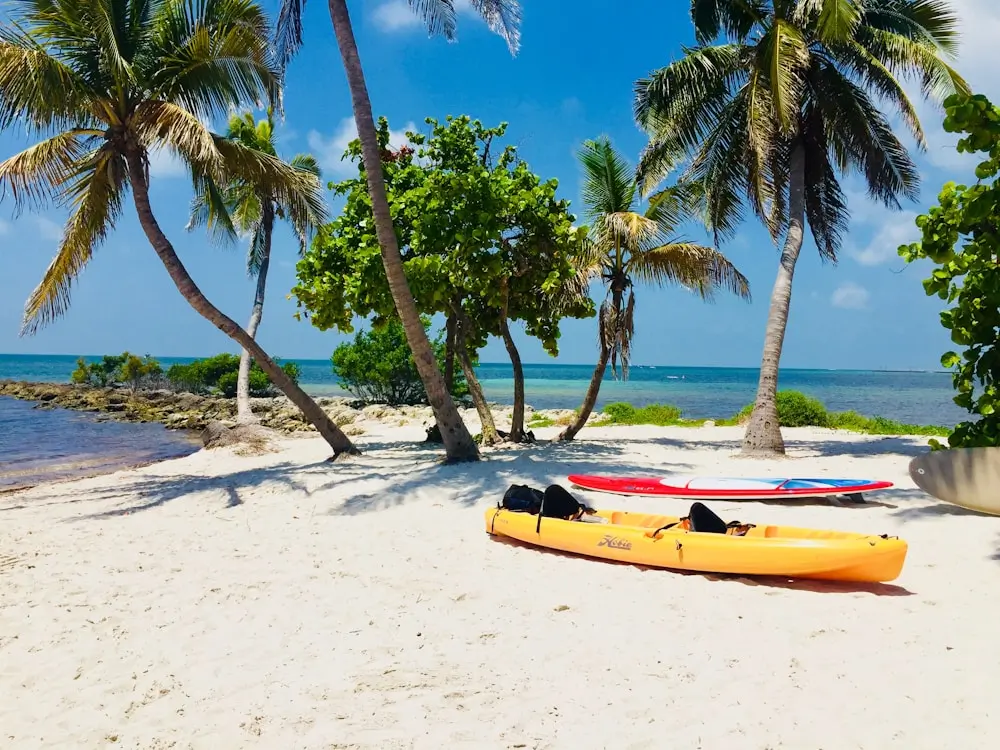
From the early 1800s to around 1920, salvage operations dominated Key West’s economy. Over 100 ships per day passed nearby, and wreckers built an industry around reef-stranded vessels.
The Key West Shipwreck Treasure Museum, housed in a recreated 19th-century warehouse, immerses visitors in this world. It features live actors, artifacts from the famed Isaac Allerton (wrecked 1856), and a 65-foot tower where wrecking lookouts once scanned the reef.
Shipwreck Artifacts of Key West:
- Key West Shipwreck Museum: Artifacts from Isaac Allerton, observatory tower
- Mel Fisher Maritime Museum: 17th‑century galleon treasures from Nuestra Señora de Atocha & others
- Fort East Martello Museum: Exhibits on pirates, wreckers, Cuban navies
Malta: Mediterranean Corsair Base
The Knights of Malta operated as “Christian corsairs,” conducting licensed piracy against Ottoman ships for centuries. Their massive fortifications and strategic position made Malta nearly impregnable, while their naval prowess dominated Mediterranean shipping routes.
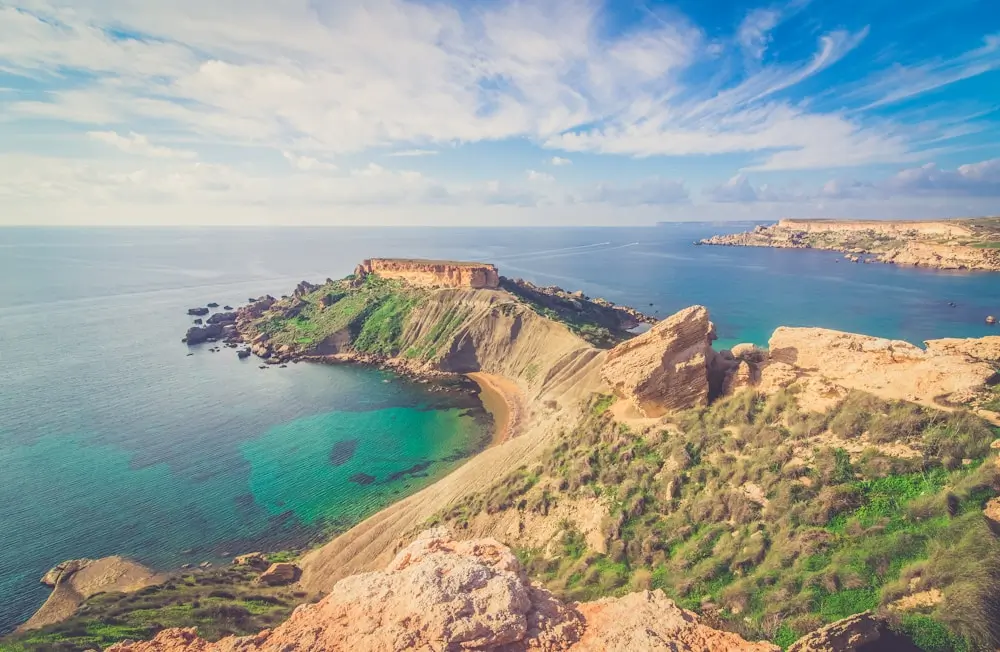
Malta’s history as a frontline opponent and occasional participant in Barbary corsair attacks has left a dense legacy of fortifications, relics, and museums. Situated between North Africa and Europe, the islands, especially under the Knights of St. John, served as both a bulwark against corsair raids and a base for Christian privateering.
Within the fortified cities of Valletta and Birgu, massive bastions and sea walls reflect prolonged efforts to thwart Mediterranean piracy. Walkable battlements include Fort St. Angelo in Birgu and the curtain walls of Valletta’s Grand Harbour, where interpretive signage and guided tours trace 16th–18th-century military responses to corsair raids.
Keeping this maritime narrative alive, the Malta Maritime Museum, housed in Birgu’s restored Royal Naval Bakery, offers over 20,000 artifacts that span naval history, including the knights’ galleys and capture-era engagements. These pieces contextualize Malta’s role as both defender and occasional corsair aggressor, a fact underlined by historians’ observations that “Christian forces based in Malta also sponsored piracy,” deploying their galley fleet much like Barbary counterparts.
Crete, Greece: Ancient and Medieval Pirate Haven
Coming to Crete, no one thinks about its pirate heritage. Hosting the best family beaches, overpriced luxury villas, and friendly locals, Crete is the top choice for a laid-back summer vacation.
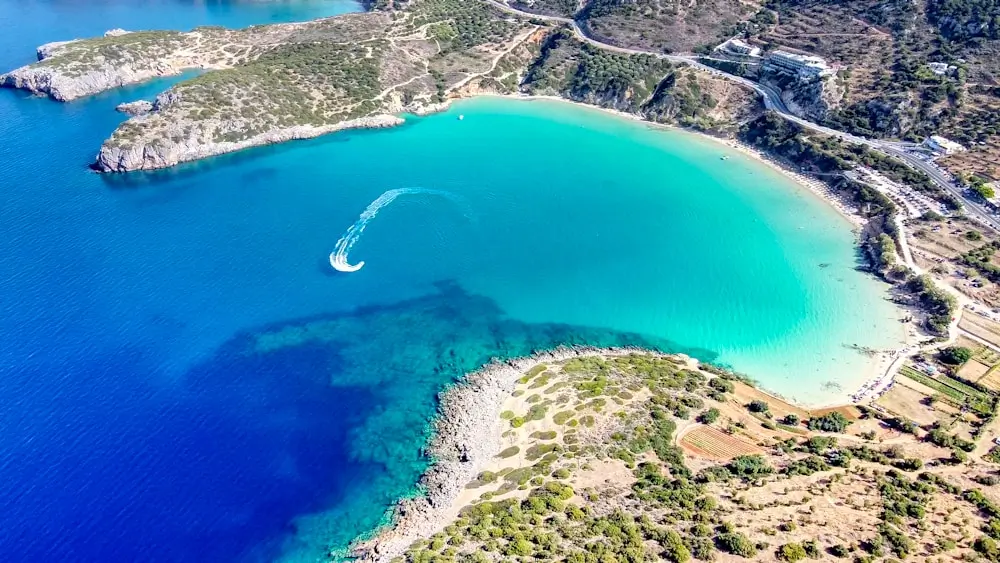
Even history buffs would not think of piracy first, and rather go seek the traces of the Minotaur. Yet, Crete’s numerous coves sheltered pirates and corsairs. The island’s position controlling Eastern Mediterranean trade routes made it invaluable for both piracy and legitimate commerce.
Top Sights to See on Crete
| Sights | Location | Details |
|---|---|---|
| Knossos Palace | 5km south of Heraklion | Admission: Adults €15, Students €8, Europe’s oldest city, Minoan civilization center |
| Venetian Fortifications | Across the island | Koules Fortress: Heraklion harbor, built 1523-1540 Chania Venetian Harbor: 14th-century lighthouse and fortified walls Rethymno Old Town: Complete Venetian fortification system intact |
| Balos Lagoon | Gramvousa Peninsula, northwest Crete | Pink sand beach, crystal-clear turquoise water; former pirate hideout with excellent defensive position |
| Palaiokastro | near Heraklion | A Venetian fortress built 1573–1595 on a rock guarding the bay; arched entrances, remnants of barracks and cannons, and imagine 13th‑century Genoese pirate defenses |
Crete Quick Facts
Going to Crete, you would definitely want to rent a car to explore or even to do some shopping. But I, personally, wouldn’t recommend doing it right at the airport, especially if you arrive at night. The curvy roads over steep cliffs have little to no lighting, making the drive from the airport to your hotel quite dangerous.
- Airports: Heraklion (largest) and Chania
- Transportation: KTEL buses connect major sites, and car rental is recommended
- Language: Greek, English is widely spoken in tourist areas
- Currency: Euro
- Best months: April-June and September-October for hiking and sightseeing
Sardinia, Italy: Corsair and Pirate Refuge
Sardinia’s rugged coastline provided countless hiding places for Mediterranean corsairs and Barbary pirates. The island’s complex political history often left it with minimal naval protection, making it an ideal refuge for sea raiders.
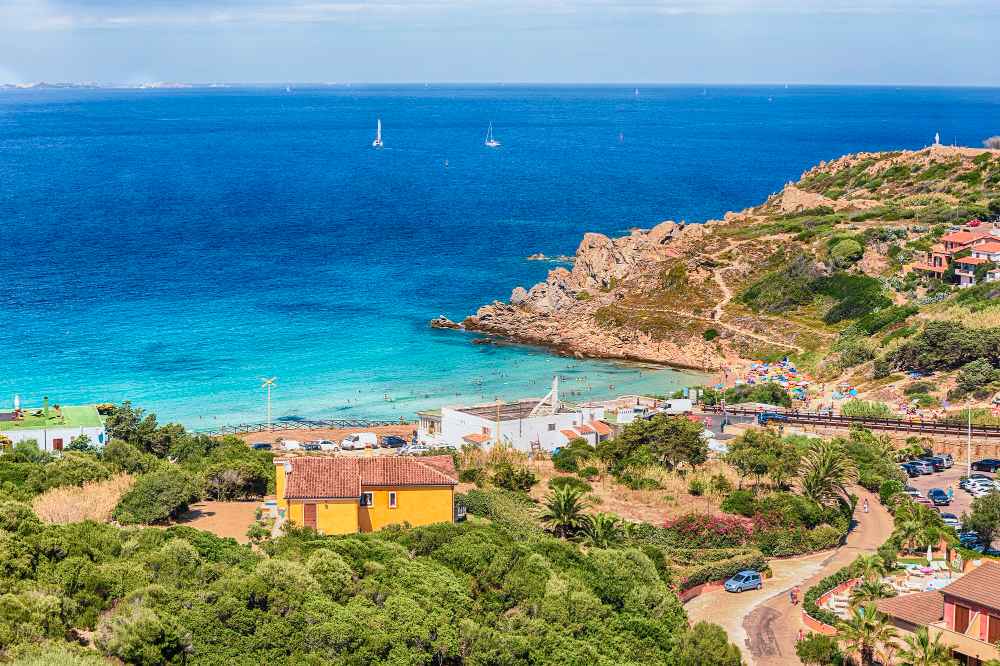
Raids by Barbary corsairs—adventurers and captains operating from Ottoman North Africa—occurred from the 16th to 19th centuries. They raided coastal villages, kidnapped islanders, sold them into slavery, and surged inland under cover of night.
In 1624, a combined Christian squadron defeated a squadron of Algerian corsairs near San Pietro Island, capturing several vessels and freeing over 150 Christian slaves. Today, lingering structural damage on towers like San Giovanni, Torre Vecchia, and Turr’e Seu along the Sinis peninsula provides physical testimony to corsair resistance.
| Feature | What You’ll See | How to Engage |
|---|---|---|
| Coastal towers (e.g. Torre Argentina, Flumentorgiu) | Ruined lookouts with seaward views and cliffside vantage points | Walk remote tracks, photograph at sunrise, read interpretive signs |
| Torre Grande (Oristano) | Two levels of Spanish masonry, lantern room, museum displays | Climb upper terrace for panorama, attend small exhibitions |
| Watchtower network relay paths | Intervisible towers forming chain of communication | Follow guided coastal trails or self-guided “Path of 100 Towers” |
| Maritime museums | Shipwright tools, signalling gear, rescue narratives | Guided tours, interactive displays, occasional craft workshops |
Accessible by air and by ferries, Sardinia is perfect for a summer road trip. A typical route for pirate history may begin in Oristano with the Torre Grande museum, followed by a coastal hike to nearby towers like Torre Argentina and Flumentorgiu.
Interpretive panels identify alignment with other towers, clarifying how smoke signals traveled between posts. A side excursion to San Giovanni Tower on the Sinis peninsula reveals defensive strategies and current ruins showing damage from corsair attacks. If you look out for more all-round Sardinia itinerary check this guide.
Corsica, France: Napoleon’s Island and Pirate History
Before becoming famous as Napoleon’s birthplace, Corsica served as a base for Mediterranean corsairs and pirates. The island’s mountainous terrain and numerous secluded bays provided perfect conditions for maritime raiders.
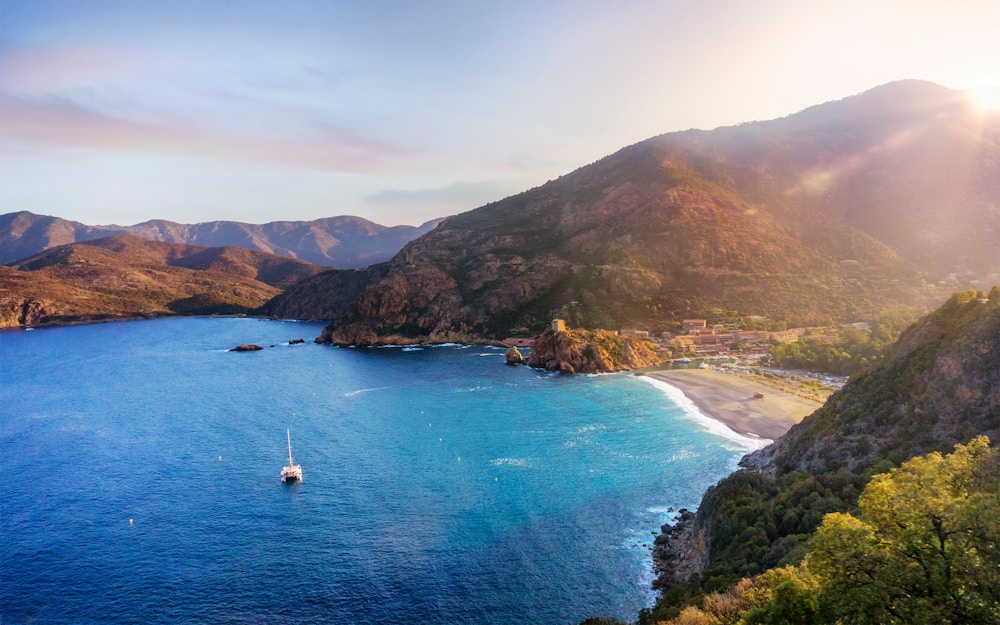
Corsica offers dramatic mountain scenery, pristine beaches, and excellent hiking trails like the GR20. Visitors can explore Napoleon’s birthplace in Ajaccio, enjoy unique Corsican cuisine, and experience a distinct Mediterranean culture. The island combines French sophistication with rugged natural beauty.
Jersey, Channel Islands: Privateering and Pirate Hub
Let’s put it this way: not every British resident knows about the existence of Jersey. But those who learn want to live here, because it’s still the UK, but with great weather.
Jersey’s strategic position in the English Channel made it a crucial base for English privateers during conflicts with France and Spain. The island’s complex tidal waters provided natural protection, while its semi-autonomous status offered political flexibility for questionable maritime activities.
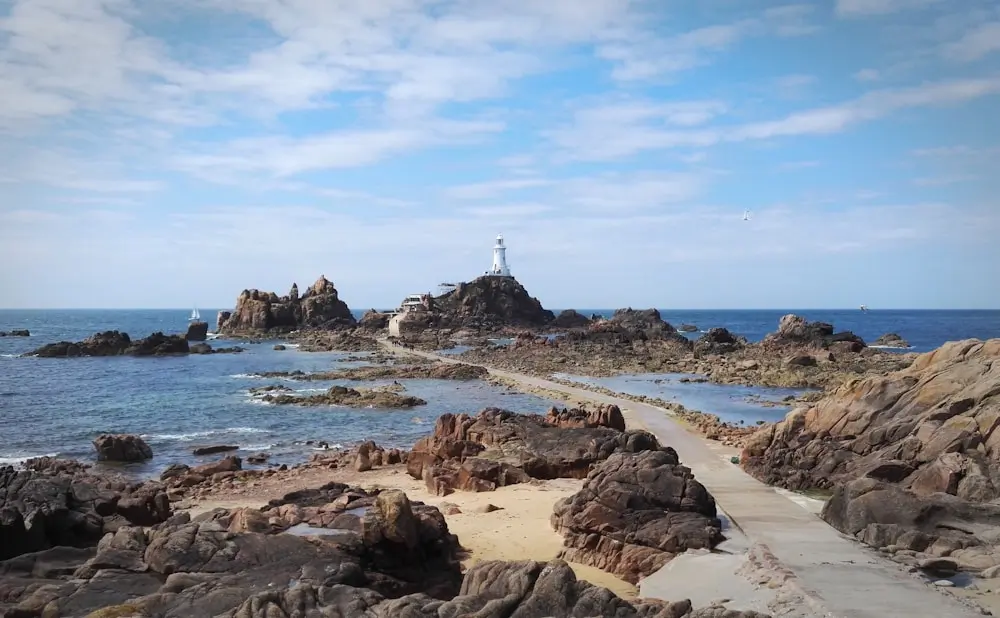
Jersey today offers beautiful beaches, excellent hiking along coastal paths, and unique cultural experiences. Visitors can explore underground war tunnels, enjoy world-renowned seafood, and discover the island’s fascinating blend of British and French influences. The island provides easy access from both Britain and France while maintaining its distinct identity.

